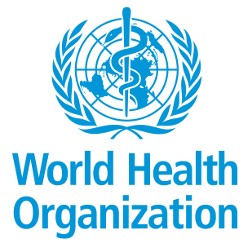Amarachi Okeh
The World Health Organisation on Tuesday issued a global guidance framework for the responsible use of the life sciences.
According to the WHO, the new guidance is the first global, technical and normative framework for informing the development of national frameworks and approaches for reducing bio risks. It also governs dual-use research.
The guideline aims to ‘safely’ unlock the great promise for new and improved ways to improve global health offered by life sciences and related technologies, WHO said.
WHO said the new framework will help to address the decades-long challenges of preventing the accidental and deliberate misuse of biology and other life sciences, as well as how to manage governance and oversight to both accelerate and spread innovation while mitigating negative impacts.
It noted that life sciences are increasingly crossing over with other fields like chemistry, artificial intelligence, and nanotechnology, which changes the landscape of risks.
Speaking about the new guidelines, the WHO Chief Scientist, Dr. Soumya Swaminathan noted that although life sciences and technologies offer many opportunities to improve health, societies, and the environment, “developments and advances in life sciences and associated technologies could pose risks caused by accidents during experiments, inadvertent and deliberate misuse.”
The press release from WHO reads in part, “Looking at how to manage the increasing pace of advances in the life sciences, the Framework outlines the need for anticipatory and responsive governance mechanisms, including foresight approaches, which are participatory and multi-disciplinary ways of exploring trends, emerging changes, systemic impacts, and alternative futures.
“To help manage risks, it covers issues such as preventing misinformation and disinformation, as well as managing large health data sets.
“Other topics include: increasing awareness and capacities for bio risk management, navigating the particular challenges around the research on infectious diseases, and preventing the misuse of research and technologies through collaboration among different actors and sectors.
“The Framework is intended as the go-to starting point for the development and strengthening of bio risk management, which relies on three core pillars: biosafety, laboratory biosecurity, and the oversight of dual-use research.
“Accounting for different contexts, resources, and priorities, the Framework is designed to be adapted by Member States and other stakeholders, depending on their needs and perspectives.
“Ministries of health are called upon to work with other ministries, including science and technology, education, agriculture, environment, and defence, along with other key stakeholders, to assess the risks posed by life sciences locally and nationally, and identify appropriate risk mitigation measures to strengthen governance for bio risks and dual-use research.
“The document aims to raise awareness about the importance of bio risk management in the context of the One Health approach to optimize the health of people, animals, and ecosystems; provide a set of values and principles to guide decision-making, and identify tools and mechanisms for bio risk management.
“Practically focused, it also sets out a six-step approach for implementation; checklists for various stakeholders; and scenarios and case studies to illustrate issues and options in the governance of bio risks and dual-use research.
“Recognising that awareness and resources will be limited in low- and middle-income countries, the Framework calls for providing these countries with technical and financial support and empowering their scientists through opportunities to pursue and govern life sciences.
“It also highlights the importance of developing more context-specific materials for awareness raising, education, capacity-building, and training.
“The life sciences include all sciences that deal with living organisms, including humans, nonhuman animals, plants and agriculture, and the environment, or products of living organisms or that incorporate components derived directly or synthetically from living organisms; the life sciences include but are not limited to biology, biotechnology, genomics, proteomics, bioinformatics, pharmaceutical, and biomedical research and technologies
“WHO activities to support the Framework’s worldwide implementation include:
“Leveraging existing efforts and initiatives, including those on laboratory biosafety, biosecurity, and ethics.
“Maintaining different stakeholders and local champions to monitor and evaluate the measures developed and implemented at local, national, regional, and global levels.
“Conducting awareness-raising activities, including regional and global dialogues, to support the sharing of experiences, lessons learned and best practices.
“Developing training and tools to evaluate progress.”
Copyright PUNCH
All rights reserved. This material, and other digital content on this website, may not be reproduced, published, broadcast, rewritten or redistributed in whole or in part without prior express written permission from PUNCH.
Contact: [email protected]























Add Comment